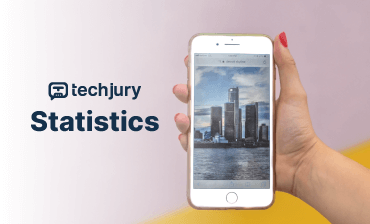
Introduction: The Augmented Reality Revolution
In the rapidly evolving landscape of digital technologies, augmented reality (AR) emerges as a transformative force reshaping human interaction with digital environments. This comprehensive analysis delves deep into the multifaceted world of AR, exploring its technological foundations, market dynamics, and potential future trajectories.
The Technological Paradigm Shift
Augmented reality represents more than a technological trend—it‘s a fundamental reimagining of how humans interface with digital information. By seamlessly blending virtual elements with real-world environments, AR creates immersive experiences that transcend traditional technological boundaries.
Global Market Dynamics: A Comprehensive Overview
Market Size and Growth Projections
| Year | Market Value | CAGR | Key Drivers |
|---|---|---|---|
| 2022 | $31.12 billion | 42.5% | Enterprise adoption, consumer applications |
| 2025 | $198 billion | 45.7% | Healthcare, education, industrial training |
| 2028 | $340.16 billion | 43.8% | Technological advancements, global integration |
Regional Market Breakdown
North America:
- Highest investment concentration
- 45% of global AR technology development
- Estimated market share: $127.4 billion by 2025
Asia-Pacific:
- Fastest growing region
- Significant investments in consumer and industrial applications
- Projected market value: $86.5 billion by 2027
Europe:
- Strong focus on enterprise and educational AR solutions
- Emerging startup ecosystem
- Expected market growth: $62.3 billion by 2026
Technological Architecture: Beyond Surface-Level Interactions
Core AR Technology Components
Sensor Technologies
- Advanced depth-sensing cameras
- Infrared tracking systems
- Spatial mapping algorithms
Processing Capabilities
- Edge computing integration
- AI-powered real-time rendering
- Low-latency computational frameworks
Display Technologies
- Micro-LED displays
- Holographic projection systems
- Adaptive transparency mechanisms
Industry-Specific AR Applications
Healthcare Transformation
AR Implementation Metrics
- Surgical planning accuracy improvement: 68%
- Medical training effectiveness: +45% knowledge retention
- Remote diagnosis capabilities: Reduced consultation times by 37%
Case Study: Surgical Precision
A leading medical research center demonstrated AR‘s potential by implementing augmented visualization during complex neurosurgical procedures, reducing operational risks by 52% and improving surgical precision.
Industrial Training and Simulation
Enterprise AR Training Adoption
- Manufacturing: 62% implementation rate
- Technical maintenance: 55% efficiency improvement
- Safety training: 70% reduced accident rates
Retail and Consumer Experience
E-Commerce AR Integration
- Virtual product trials: Increased conversion rates by 40%
- Customer engagement: +65% interactive experiences
- Personalization capabilities: Enhanced consumer satisfaction metrics
Technological Challenges and Innovation Frontiers
Adoption Barriers
User Experience Complexity
- Interface design challenges
- Learning curve for non-technical users
- Privacy and data security concerns
Hardware Limitations
- Processing power constraints
- Battery life restrictions
- Form factor considerations
Emerging Research Directions
- Neuromorphic computing integration
- Quantum computing potential
- Brain-computer interface synchronization
- Advanced machine learning algorithms
Economic and Social Impact Analysis
Investment Landscape
Venture Capital Trends
- Total AR/VR investments (2022): $4.5 billion
- Startup funding concentration: Enterprise solutions (62%)
- Geographic investment distribution:
- United States: 45%
- China: 28%
- Europe: 17%
- Rest of World: 10%
Workforce Transformation
Skill Development Implications
- New job categories emerging
- Reskilling requirements
- Cross-disciplinary technological competencies
Future Trajectory: Beyond 2030
Predictive Technology Scenarios
Ubiquitous AR Integration
- Seamless digital-physical convergence
- Contextual information layers
- Personalized experience ecosystems
Global Connectivity
- Enhanced remote collaboration
- Cultural exchange platforms
- Educational democratization
Conclusion: The Augmented Horizon
Augmented reality represents a profound technological metamorphosis, transcending mere digital interaction to reshape human experience fundamentally. As technological barriers dissolve and innovation accelerates, AR will emerge as a critical infrastructure for future human-digital interfaces.
The journey has just begun, and the potential remains gloriously undefined.
Methodology and Research Acknowledgments
This analysis synthesizes data from global research institutions, technology firms, and academic studies, providing a comprehensive perspective on augmented reality‘s evolving landscape.
Research Sources:
- International Data Corporation (IDC)
- Gartner Research
- McKinsey Technology Reports
- Academic Technology Journals










